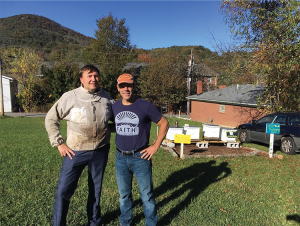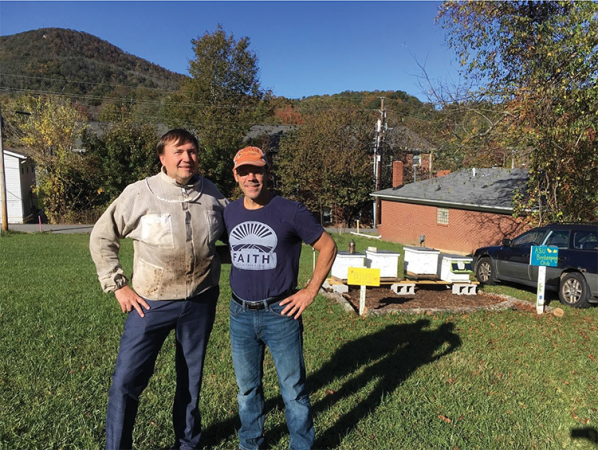Dr. Joseph Cazier, a professor in the Department of Computer Information Systems and Supply Chain Management in the Walker College, wrote an article titled 'Peering into the Future: A Path to the Genius Hive'. His article was featured in Bee Culture, the magazine of American beekeeping.
Cazier and two colleagues were inspired by a webinar about the smart hive, a beehive that collects data and can tell you about itself. Our mission, says Cazier, is to take the smart hive to the next level and develop a genius hive.
A genius hive is similar to a smart hive in that both hives can collect data and tell the beekeeper about itsself; about its conditions. However, the difference between the smart hive and the genius hive is that in addition to gathering data about the hive's activity, the genius hive uses algorithms and machine learning to tell the beekeeper what specific steps need to be taken to maintain the integrity of the hive and the bees; in essence the genius hive will be able to tell you what it needs to do better.
A smart hive measures hive weight, temperature and humidity, and can produce sounds and images to tell the user about itself. A genius hive would go to further by monitoring the hive for troubling activity and notifying the beekeeper before problems occur. A genius hive would create customized practices and suggestions for one's particular hive, telling the user exactly what they need to do to ensure the successful operation of the hive.
According to Cazier, a genius hive cannot successfully exist and operate by itself. It needs to be part of a larger network (a collection of hardware, software, knowledge, and standardized data). That being said, Cazier discusses in his article the 4-step process in moving from the smart hive to building the genius hive:
Step 1: Develop and adopt a universal data standard. When beekeepers, vendors, and researchers develop an international standard for the collection and storage of data, the data can the be collected at the scale necessary to build a genius hive.
Step 2: Identify and validate best management practices: This knowledge helps in customizing management practice recommendations for each individual hive.
Step 3: Integrate data collection, machine learning, and best management practices into a system. As more people begin to keep hive records in an electronic format and share data with the bee community, the records are used to build and grow a genius hive.
Step 4: Continually use and improve the system with additional data, insights and technology.
Cazier and his team welcome all to participate by sharing data, contributing knowledge and insight, and/or working to understand and apply what they are learning from the data they collect.
"Our goal is to create a future where the genius hive helps beekeepers everywhere to not only know their bees, but to know what the bees need to be the best they can be." - Dr. Joseph Cazier.

